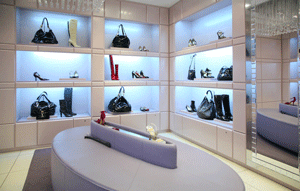••• consumer psychology
Study finds it’s expensive to let down your guard
Ever wonder why luxury products and services, such as high-end boutiques and luxury hotels, often present relaxing environments? As it turns out, with all else being equal, consumers are willing to pay higher prices if marketers are able to relax them first.
States of relaxation consistently increase the monetary valuations of products, actually inflating these valuations by about 10 percent, according to a paper by Michel Tuan Pham, Iris W. Hung and Gerald J. Gorn in the Journal of Marketing Research. This phenomenon was demonstrated in six experiments involving two different methods of inducing relaxation, a large number of products of different types and various methods of assessing monetary valuation. In all six experiments, participants who were put into a relaxed affective state reported higher monetary valuations than participants who were put into an equally-pleasant but less-relaxed state.
This phenomenon was demonstrated in six experiments involving two different methods of inducing relaxation, a large number of products of different types and various methods of assessing monetary valuation. In all six experiments, participants who were put into a relaxed affective state reported higher monetary valuations than participants who were put into an equally-pleasant but less-relaxed state.
In one simulated bidding study, relaxed participants bid about 11 percent higher for a digital camera than less-relaxed participants. Whereas the less-relaxed participants’ bids were close to the product’s estimated market price on online auction sites, relaxed participants’ bids were about 15 percent higher than the estimated market price. The same effect was observed across a large variety of products in other studies. Not only did relaxed participants think that relaxing products and services such as a spa treatment or a cruise were worth more, they also thought that exciting products and services (e.g., bungee-jumping sessions) and indulgent products and services (e.g., an ice cream sundae) were worth more as well.
According to the researchers, relaxed consumers think products are worth more than less-relaxed consumers because relaxed individuals tend to think about the value of products at a more abstract level. For example, when bidding for a camera, relaxed participants focused more on what the camera would enable them to do (e.g., collect memories) and how desirable and advantageous it was to own it, while the less-relaxed participants focused more on the concrete features of the camera itself (e.g., the number of megapixels it had, the shutter speed, etc.).
"The study reveals a psychological reaction to the biology of being relaxed: Your system thinks there is no threat in the environment. As a result, you tend to perceive various things as more desirable. Shoppers should be aware of how this impacts their decision-making,” said Pham. And so, it’s clear, should marketers.
••• ad research
Facial recognition for advertising hits the streets
Technology that was once only seen in movies has become a reality for advertisers. According to Shan Li and David Sarno’s August 21 article, “Advertisers start using facial recognition to tailor pitches,” in the Los Angeles Times, facial recognition technology works by digitally measuring the distance between the eyes, the width of the nose, the length of a jawline and other data points. The measurements are then compared to standardized codes that represent features typical of males and females in various age brackets. 
Once a viewer’s demographic profile is established, targeted ads will appear.
The technology can be installed into kiosks, vending machines and digital signs. The Venetian resort, hotel and casino in Las Vegas has started using it on digital displays to tailor suggestions for restaurants, clubs and entertainment to passersby. Kraft Foods Inc. and Adidas say they are planning to experiment with it as early as this year to push their products.
“If it recognizes that there is a female between 25 to 29 standing there, it may surmise that you are more likely to have minor children at home and give suggestions on how to spice up Kraft Macaroni & Cheese for the kids,” said Donald King, vice president, retail experience, at Kraft.
